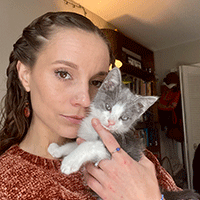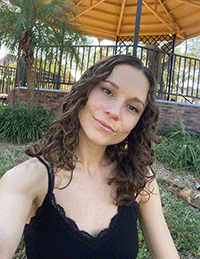Hereditary Coproporphyria (HCP)

My Porphyria Story
In 2013, I started to get very ill. I would have extreme abdominal pain, violent vomiting, and neuropathy mixed with mental confusion. For years, I was told it was PMS or anxiety. Doctors prescribed me a plethora of prescriptions, which, in my opinion, did more harm than good.
About three years ago, my younger sister, who also has the condition, did a genetic test, and it came back positive for porphyria. Once they were notified of the cause of her symptoms, I immediately went to the same doctor to have tests run. Once it showed signs of porphyria, we tried the Panhematin infusion during a hospital admission. I had not felt relief in years, and I finally felt like I was back to normal.
Living with porphyria has completely reshaped the way I approach life—physically, emotionally, and mentally. My symptoms are unpredictable, often leaving me nauseous, in debilitating pain, and unable to function for hours or even days. Mornings are the hardest, and there are days I wake up too sick to even keep my medication down.
I’ve had to adapt every part of my life around managing this condition—tracking food, stress, sleep, and every environmental factor I can think of. Still, even with that effort, flares can come on suddenly and overpower anything I had planned.
Throughout the past two years, I have been dealing with insurance complications, which have caused my treatment methods to be less than perfect. I’ve had to wait until I was in a “porphyria attack crisis” and then admit myself to an ER in hopes that a hematologist would be able to treat me.
Over the past year, I have had the opportunity to receive treatment at the Moffitt Medical Center. Dr. Extermann was recommended specifically by the American Porphyria Foundation. She has been absolutely fantastic in helping me feel better and live at a normal baseline. The past six months have been the first time in ten years that I haven’t been admitted for several days at a time. I’m beyond grateful for the doctors who understand and listen, especially when it comes to a disease that is so rare and complicated. I hope that all those struggling with a misdiagnosis—or no diagnosis—will be able to find the same level of care that I finally have.
But despite all of this, I’m still here. I’m still trying. I want to share my experiences because I know I’m not alone. I believe in the power of connection and compassion. I hope that by telling the truth about what porphyria is really like, it helps others feel less alone, and maybe even encourages more awareness for all of us who live with it.

